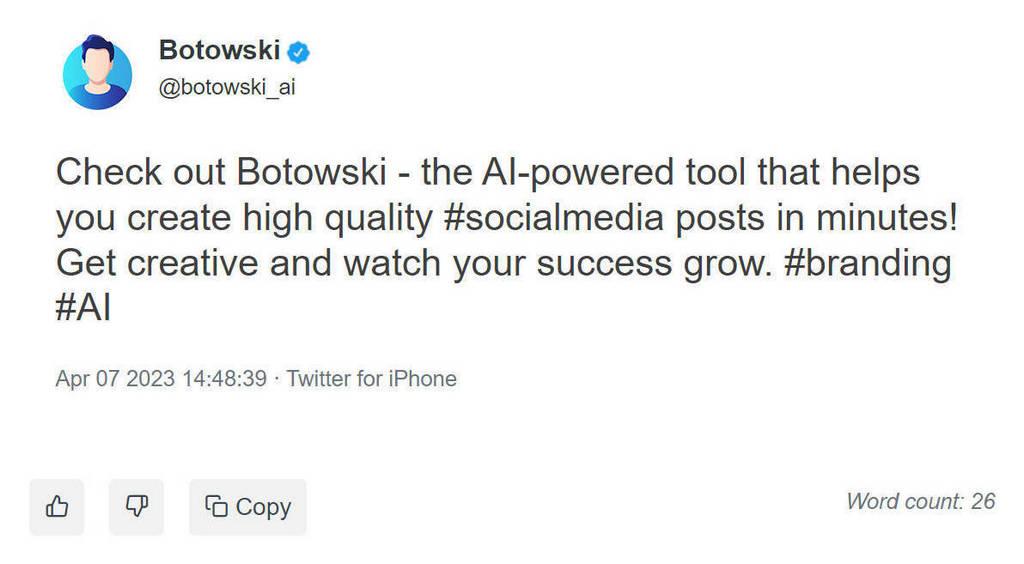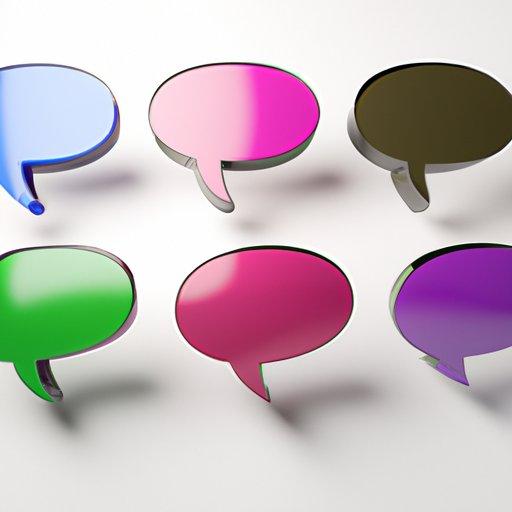The answer isn’t necessarily straightforward and will vary depending on the platform and your target audience.
To start, it’s important to understand that the amount of content you post on social media should not be determined by a specific number, but rather by the level of engagement and interaction you receive from your followers.
On Facebook, for example, it is recommended to post 1-2 times per day. This allows you to share relevant content without overwhelming your audience. On Twitter, where the newsfeed moves quickly, it is recommended to post 2-3 times per day to ensure your content is seen. And on Instagram, where the emphasis is on visual content, posting 1-2 times per day is a good rule of thumb.
However, it’s important to keep in mind that these are just general guidelines and you should always analyze your audience engagement and adjust your posting frequency accordingly. If you notice that your followers are engaging more with your posts when you post more often, then it may be beneficial to increase your posting frequency.
The key to successful social media posting is to find the right balance that works for your audience and to always analyze and adjust your strategy based on engagement levels.
Here are some key points to consider when deciding how often to post on social media:
Understand your audience
Understanding your audience is an essential part of creating an effective social media strategy. Different social media platforms have different audiences with different preferences, and it’s important to tailor your content and posting frequency to suit your specific audience.
To understand your audience, start by researching the demographics of the social media platforms you’re using. This information is readily available on the platforms themselves or through third-party research tools. For example, you can use Facebook’s Audience Insights tool to learn more about the demographics of Facebook users, including their age, gender, location, and interests.
Once you have a good understanding of the demographics of your audience, you can start to research their preferences and behavior. This can help you determine the best posting frequency and type of content to use on each platform.
One way to research your audience’s preferences is to look at the content that’s already popular on the platforms you’re using. What types of posts are getting the most likes, comments, and shares? What topics and formats seem to be the most engaging for your audience? Use this information to guide the content you create and the frequency with which you post it.
Another way to research your audience is to directly ask them. You can use polls, surveys, and other engagement tools to learn more about their preferences and behavior. For example, you could create a poll on Twitter asking your followers how often they prefer to see your posts. You could also use a survey tool like SurveyMonkey to gather more detailed information about your audience’s interests and preferences.
Once you have a good understanding of your audience, you can use that information to create a posting schedule that resonates with them. If your audience on Twitter prefers to see frequent updates, you might consider posting several times per day. If your audience on LinkedIn is more interested in in-depth, thought-provoking content, you might focus on posting a few high-quality posts per week.
Understanding your audience is key to creating an effective social media strategy. Research the demographics of the platforms you’re using, study the content that’s already popular with your audience, and use engagement tools to learn more about their preferences. Use this information to tailor your posting frequency and content to suit your specific audience.
Quality over quantity
In the world of social media, it can be tempting to focus on quantity over quality. After all, the more content you create and share, the more visibility and engagement you’re likely to get, right?
Wrong.
In reality, constantly churning out low-quality content can actually harm your social media presence. Posting too frequently can be overwhelming for your followers and can cause them to unfollow you. Additionally, constantly posting can decrease the engagement and effectiveness of your posts.
On the other hand, posting high-quality content can help you build a loyal and engaged audience. By taking the time to create well-written, visually appealing content, you can grab the attention of your followers and encourage them to engage with your brand.
But what exactly is “high-quality” content? Here are a few key characteristics to look for:
- Relevance: Your content should be relevant to your audience and their interests. This will help ensure that your posts are seen and engaged with by the right people.
- Value: Your content should provide value to your audience. This could be in the form of entertainment, information, education, or inspiration. Whatever form it takes, your content should be something that your audience will find useful, interesting, or engaging.
- Originality: Your content should be original and unique. In a world where there’s no shortage of content, standing out can be a challenge. By creating content that’s fresh and original, you can differentiate yourself from the competition and grab the attention of your audience.
So, how do you balance the need for quality with the need for quantity? The key is to focus on creating a few high-quality posts rather than a large number of low-quality posts. This could mean posting once or twice per day on social media, rather than several times per hour. It might also mean taking the time to carefully craft each post, rather than quickly churning out something that’s mediocre.
In short, when it comes to social media, quality should always come before quantity. By focusing on creating engaging, valuable, and original content, you can build a loyal and engaged audience that will help your brand thrive on social media.
Timing is key
Timing is everything, and that’s especially true when it comes to social media. The time of day that you post on social media can have a big impact on the engagement and reach of your posts. Post at the right time, and your content is more likely to be seen and engaged with by your followers. Post at the wrong time, and your content is likely to be missed or overlooked.
So, how do you know the right time to post on social media? There’s no one-size-fits-all answer, as the best times to post can vary depending on your audience, your industry, and the social media platform you’re using. However, there are a few general guidelines that you can follow to help maximize the reach and engagement of your posts.
First, consider the time zone of your audience. If you have a global audience, you’ll need to post at different times in order to reach people in different time zones. For example, if you’re targeting an audience in the US, you might want to post during the morning and afternoon on the East Coast, and during the afternoon and evening on the West Coast.
Second, consider the behavior of your audience. Different social media platforms have different audiences with different behavior patterns. For example, Twitter users tend to be more active during the workday, while Instagram users are more likely to be active in the evenings. Research the behavior patterns of your audience on each platform to determine the best times to post.
Third, consider the competition. If you’re posting at a time when many other people are also posting, your content is likely to get lost in the noise. To avoid this, try to post when there’s less competition for attention. For example, you might want to avoid posting during peak hours when many people are active on social media.
To sum up, timing is key when it comes to social media. By understanding the time zone of your audience, the behavior patterns of your audience on each platform, and the level of competition for attention, you can determine the best times to post and maximize the reach and engagement of your content.
Use a social media post automation tool
If you’re struggling to come up with fresh, engaging content for your social media posts, a social media post generator like Botowski can be a lifesaver.
Botowski is an AI-powered tool that helps you create high-quality social media posts in minutes. Simply enter a few keywords related to your business or industry, and Botowski will generate a list of custom-made social media posts that are tailored to your needs.

One of the biggest advantages of using a social media post generator is that it saves you time and effort. Instead of spending hours brainstorming and creating content, you can quickly and easily generate a range of high-quality posts that are ready for sharing with your audience.
Another advantage of using Botowski is that it can help you generate content that’s more engaging and effective. Because the tool is powered by AI, it uses data and algorithms to generate content that’s designed to grab the attention of your audience and encourage them to engage with your brand.
Of course, using automated tools doesn’t mean you can completely forget about creating your own content. It’s still important to regularly produce original, high-quality content that’s tailored to your brand and your audience. However, Botowski can be a valuable supplement to your social media strategy, helping you quickly and easily create a range of engaging posts that will keep your audience engaged and interested.
Test and adjust
Once you have identified your goals and analyzed your audience, it’s time to start testing and adjusting your posting frequency. This is an important step, as it will help you determine the optimal posting frequency for your brand.
Here are a few tips to help you test and adjust your posting frequency:
- Start with a posting frequency and track your engagement metrics. This could be the recommended posting frequency for your platform, or a frequency that you think will work best for your audience. For example, if you want to drive traffic to your website, you may want to post 2-3 times per day on Twitter, where users are more likely to click on links.
- Monitor your engagement metrics over time. Use tools like Facebook Insights and Twitter Analytics to track your engagement metrics such as likes, comments, and shares. Are these metrics increasing or decreasing?
- If you notice a decline in engagement, try increasing or decreasing your posting frequency and see if it makes a difference. For example, if you are posting twice a day on Facebook and your engagement is declining, try increasing your posting frequency to 3-4 times per day. On the other hand, if you are posting 5 times a day on Twitter and your engagement is declining, try decreasing your posting frequency to 2-3 times per day.
- Keep testing and tweaking until you find the right balance. The key is to experiment and see what works best for your brand.
Don’t be afraid to experiment and try different posting frequencies to see what works best for your brand.
Conclusion
It is not necessarily important how many times you post on social networks per day. Instead, it is more important to focus on the quality of your posts and the value they provide to your followers. If you can create engaging, interesting content that your followers will enjoy, they will be more likely to engage with your posts, regardless of how often you post. Additionally, it is important to consider the specific social network you are using and the expectations of your followers on that platform. Some social networks, such as Twitter, are designed for users to post multiple times per day, while others, such as LinkedIn, may be better suited for fewer, more in-depth posts. Ultimately, the best approach will depend on your goals and your target audience.
Understanding your audience is key to creating an effective social media strategy. Research the demographics of the platforms you’re using, study the content that’s already popular with your audience, and use engagement tools to learn more about their preferences. Use this information to tailor your posting frequency and content to suit your specific audience.



